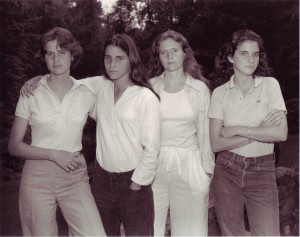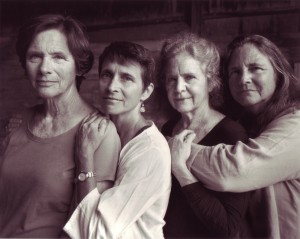Things Change
Heather, Mimi, Bebe and Laurie, 1975
Heather, Mimi, Bebe and Laurie, 2014
***
I went to the St. Louis Art Museum on Sunday to see the Nick Cave exhibit (which was AWESOME) and while I was there, I remembered there was a photo exhibit I’d read about in the New York Times that I wanted to see — Nicholas Nixon: 40 Years of the Brown Sisters, so I stopped in.
I was so moved, I was almost in tears.
Nicholas Nixon took a photo of his wife (Bebe) standing with her three sisters (Heather, Mimi and Laurie) in 1975. Then he kept taking a photo of them, one each year, for 40 years. The sisters age, of course. But what really touched me about seeing this so beautifully and unflinchingly documented….is that I am the same age as Bebe.
So I looked young like that in 1975.
And of course, now I look old like that.
There’s no getting around it. And it’s nobody’s fault. We were both young and lovely once. And now we’re not.
And of course, it doesn’t stop there. Next year, we’ll be older. And then older, and older, and older.
And in forty more years….we’ll be long gone.
***
The exhibit will be up through April 5. Don’t miss it.
Phillip’s Top Ten
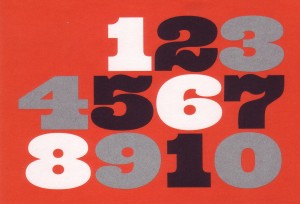 I received an email from Phillip Moffitt over the weekend that included a list of Ten Values Associated with Well-Being, which he has used to help top level managers identify their core values and become more effective in their leadership roles.
I received an email from Phillip Moffitt over the weekend that included a list of Ten Values Associated with Well-Being, which he has used to help top level managers identify their core values and become more effective in their leadership roles.
I’m simplifying the text here–except for number 5, which I am quoting in full because somehow that one really jumped out at me. (Especially the part about driving in traffic!)
You can read Phillip’s full text on his DharmaWisdom website. (click here)
Ten Values for Well-Being
1. Be truthful.
2. Be genuine and authentic.
3. Be kind.
4. Be especially compassionate to those having difficulty.
5. Act and make choices in terms of relatedness. Know that you are part of something larger. For example, when you are driving in heavy traffic, know that you are part of the traffic and not separate from it. Or, in the workplace, maintain an awareness that you are dependent on others and others are dependent on you. Having a sense of your connection to others breaks the aloneness that’s part of our existential quandary as human beings.
6. Honor your own creativity.
7. Primarily spend time on areas you care about.
8. Continue to learn and grow.
9. Be present.
10. Take responsibility for your body.
Extra-Ordinary
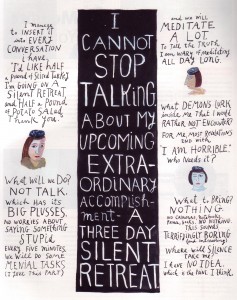 How about doing something Extra-Ordinary….as in: I Cannot Stop Talking About My Upcoming Extra-Ordinary Accomplishment–A Three Day Silent Retreat. (Illustration by Maira Kalman, mindful.org, Oct. 2013. Click on image to enlarge)
How about doing something Extra-Ordinary….as in: I Cannot Stop Talking About My Upcoming Extra-Ordinary Accomplishment–A Three Day Silent Retreat. (Illustration by Maira Kalman, mindful.org, Oct. 2013. Click on image to enlarge)
Maira writes:
* I manage to insert it into every conversation I have. “I’d like half a pound of sliced turkey…I’m going on a silent retreat…and a half a pound of potato salad. Thank you.”
* What will we do? NOT TALK. Which has its BIG PLUSSES. No worries about saying something stupid every five minutes. We will do some menial tasks. (I love this part.)
* And we will meditate A LOT. To tell the truth, I am wary of meditating all day long.
* What demons lurk inside me that I would rather NOT encounter? For me, most revelations end with “I am horrible,” and who needs it?
* What to bring? NOTHING. No cameras, notebooks, pens, books. No nothing. This sounds terrifyingly boring (and interesting). Where will silence take me? I have no idea. Which is the point. I think.
***
Want to see where silence will take you?
Mid-America Dharma is offering an excellent opportunity at the 3-day silent retreat taught by Gloria Taranyia Ambrosia here in St. Louis, May 7-10. (For more information, click here.)
Come see for yourself. It will definitely not be an ordinary accomplishment.
Give Up All Other Worlds
Sweet Darkness
by David Whyte
When your eyes are tired
the world is tired also.
When your vision has gone
no part of the world can find you.
Time to go into the dark
where the night has eyes
to recognize its own.
There you can be sure
you are not beyond love.
The dark will be your womb
tonight.
The night will give you a horizon
further than you can see.
You must learn one thing.
The world was made to be free in.
Give up all the other worlds
except the one to which you belong.
Sometimes it takes darkness and the sweet
confinement of your aloneness
to learn
anything or anyone
that does not bring you alive
is too small for you.
Going Back to Looking Again
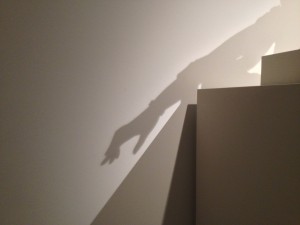 As some of you know from previous posts (here, here, here, here, and here), I’ve had an on-again-off-again practice of going to the Art Museum and looking at a piece of art — 13 times — each time writing in my journal, beginning with the phrase: Now I see….
As some of you know from previous posts (here, here, here, here, and here), I’ve had an on-again-off-again practice of going to the Art Museum and looking at a piece of art — 13 times — each time writing in my journal, beginning with the phrase: Now I see….
For some reason, I never finished all 13 viewings of Guanyin (although I thought I had at the time), so now I’ve been going back and looking again. Here’s what I wrote on the 9th viewing:
Now I see the space around her, empty but not empty (as they say). Empty of the wood and paint that “she” — the statue — is made of, but FULL of the shadows and light, the ever-so-slightly shifting of my perception and also, of course, full of space. Full of the potential for something else to be there. Full of the negative space created by the presence of the material form.
It’s as if this space is holding her there. Softly. Cushioning, even. And the neutral putty-grey color of the base on which she sits, and the walls around her, reflecting onto the colors of her form–not separate from her. Not of the form, but affecting it. Contrasting against it. And also supporting it, embracing it. Allowing for its presence.
The spotlights, too, a part of her form. Because how differently she would appear if any one of them — or all of them! — were turned off. The shadows that articulated her form would fall away. The colors would darken, fade, grow less distinguishable. Or she would disappear altogether in the darkness The form would still be there, but “I” would have no experience of it.
So the light is definitely a part of the form, the experience of the form. And the fact that I am looking at it, too, is a part of it. Because I no longer “see her” when my eyes are focused on the page where I am writing, but I “see her” in my mind. Or, rather, I experience the memory of seeing her. And then I turn away from the page, turn back to the form, and she appears once again in my actual — externally generated — experience. Or, rather, externally dependent experience.
But my experience is also internally dependent, because I recognize her. I remember having seen her before and I experience the accumulated experiences of having seen her before. Or at least a residue of those experiences.
I look to her face and I see the darker-than-the-rest place between her slightly-openend eyelids. I see what I see, but maybe I see this instead of that — because I remember having seen those shades below her eyelids before, when I’ve stood closer and looked more directly into them.
So this is what I see “now.” But only because of what I have seen “before.” Dependent on the light and the form, on my eyes, my glasses even, and depending on the intention I have made to look at her, dependent on my attention, on memory, and on the intention and the skill and the attention of the artist — of his/her tools, training, available time — even on the light that was present while he/she worked… All of this — and so much more — is present in this moment of seeing!
Green Gold
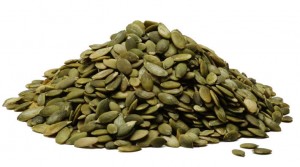 I’ve noticed that Retreat Food often includes a lot of seeds and nuts — a way to increase protein, I assume, but also of course to add texture and taste. The cook at Dharmagiri, for example, always cooked pumpkin seeds in with the oatmeal!
I’ve noticed that Retreat Food often includes a lot of seeds and nuts — a way to increase protein, I assume, but also of course to add texture and taste. The cook at Dharmagiri, for example, always cooked pumpkin seeds in with the oatmeal!
So for today, I offer this recipe for Pumpkin Seed and Parsley Salsa…an easy (and seedy!) treat I found in one of the cookbooks I saw in the Dharmagiri kitchen, The Cake the Buddha Ate. (The cake in question was Carrot Cake — with walnuts, of course.)
Pumpkin Seed and Parsley Salsa
(serves 4)
1/2 cup pumpkin seeds
1 clove garlic
1 green chili
1 cup parsley, roughly chopped
juice of 2 limes
1/3 cup olive oil (approx.)
salt and pepper to taste
1/2 tsp ground cumin
Dry roast the pumpkin seeds in a frying pan. Allow to cool.
Combine all the ingredients in a blender, except for the olive oil. Begin blending and gradually add the olive oil until a paste is formed. Adjust the seasonings.
***
Great with corn tortillas and a tangy tomato sauce!
If You Want to Understand…Observe
 The Monday night Dharma Book KM Group is in the process of getting rejuvenated (by adding a few new members), so I thought this would be a good time to post a quote from the book we’re reading/discussing: Mindfulness: A Practical Guide to Awakening, by Joseph Goldstein.
The Monday night Dharma Book KM Group is in the process of getting rejuvenated (by adding a few new members), so I thought this would be a good time to post a quote from the book we’re reading/discussing: Mindfulness: A Practical Guide to Awakening, by Joseph Goldstein.
From the Preface:
“I first became interested in Buddhism and meditation as a Peace Corps volunteer in Thailand. After returning home and trying to continue the practice on my own, I quickly realized that I needed a teacher. This was in 1967, and at that time there were few Buddhist teachers to be found in the West. So I returned to Asia, first stopping in India to look for someone who could guide my practice. I went to Himalayan hill stations, unfortunately in winter when all the Tibetan teachers had gone south. After visiting different ashrams, I ended up in Bodh Gaya, a small village in Northern India, where Siddhartha Gotama became the Buddha, the Awakened One.
“Anagarika Munindra, my first teacher, had just returned from nine years in Burma and had begun teaching vipassana, or insight meditation. When I first arrived, he said something so simple and direct that I knew I had come to my spiritual home: ‘If you want to understand your mind, sit down and observe it.‘ As he explained the practice, I resonated with this direct looking at the nature of the mind and body, at how suffering is created and how we can be free.
“The simple, although not always easy, practices of vipassana are all rooted in one important discourse of the Buddha: the Satipatthana Sutta. Satipatthana is often translated as ‘the four foundations of mindfulness,’ but another, and perhaps more helpful, translation is ‘the four ways of establishing mindfulness.’ In terms of awareness of the different aspects of our experience, this slight shift of translation has important implications: it gives more emphasis to the process of awareness itself, rather than to the particular objects of our attention.”
***
Come, Dharma Friends…..the game’s afoot!
I’m Also Reading….
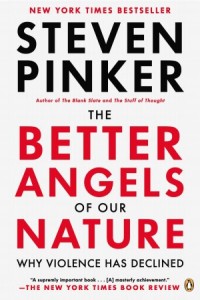 I’m just about finished reading Karen Armstrong’s excellent (but a bit overwhelming) new book, Fields of Blood: Religion and the History of Violence. I recommend it, especially if you’re of the view that RELIGION is the PROBLEM…or even that RELIGION is the SOLUTION….because the book does a very thorough job of showing that, well, basically it’s a whole lot more complicated than that.
I’m just about finished reading Karen Armstrong’s excellent (but a bit overwhelming) new book, Fields of Blood: Religion and the History of Violence. I recommend it, especially if you’re of the view that RELIGION is the PROBLEM…or even that RELIGION is the SOLUTION….because the book does a very thorough job of showing that, well, basically it’s a whole lot more complicated than that.
Because the subject of violence (which I tend to want to avoid) became quite fascinating while I was reading, and also because I was starting to get a sense of the evolution of structural/institutional violence, I decided to pick up Steven Pinker’s bestseller from 2011, The Better Angels of Our Nature: Why Violence Has Declined. Which covers much the same territory as Armstrong’s book, but from a broader perspective — and with a more optimistic tone.
Here’s the first paragraph of the preface:
“This book is about what may be the most important thing that has ever happened in human history. Believe it or not–and I know that most people do not–violence has declined over long stretches of time, and today we may be living in the most peaceable era in our species’ existence. The decline, to be sure, has not been smooth; it has not brought violence down to zero; and it is not guaranteed to continue. But it is an unmistakable development, visible on scales from millennia to years, from waging of wars to the spanking of children.”
Hallelujah!
Creative, Intuitive and Innovative
 I formally registered online today for the first Community Dharma Leader (CDL) retreat that will be held at Spirit Rock on April 16-23. There was a very concise description of the program on the registration page that I don’t remember reading before:
I formally registered online today for the first Community Dharma Leader (CDL) retreat that will be held at Spirit Rock on April 16-23. There was a very concise description of the program on the registration page that I don’t remember reading before:
“The Community Dharma Leader Program is training and support for committed Dharma practitioners who have the potential to develop leadership skills. The foundation of the training is the ancient lineage of Theravada; yet, it is also designed to encourage creative, intuitive and innovative responses to applying these timeless teachings to contemporary lives. These teachings offer a Path through the complex difficulties of our world in spiritual, social, political, cultural, interpersonal and personal contexts.”
That reference to “political” helps explain why one of the first books we’re reading is Joanna Macy’s Coming Back to Life. (Which, as you may know, I’m not all that thrilled about. See my previous post on the subject here.)
But I love the “creative, intuitive and innovative” part!
Although when it comes to “applying these timeless teachings to contemporary lives” it could get messy.
Which is kind of the point, right?
Stay tuned.
What We Once Named Poison
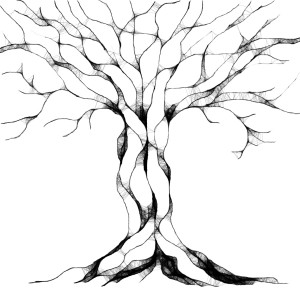 At the next Sunday Sangha, it will be my turn to bring in a reading for the group to discuss. I’m thinking about bringing the passage below, from After the Ecstasy, the Laundry, by Jack Kornfield:
At the next Sunday Sangha, it will be my turn to bring in a reading for the group to discuss. I’m thinking about bringing the passage below, from After the Ecstasy, the Laundry, by Jack Kornfield:
In Buddhist psychology, this maturing [of the spiritual path] is described through the image of a poisonous tree, which represents the suffering of the world. When we discover that a tree in our midst is poisonous, our first impulse is to try to cut it down–to remove it, so it no longer can be harmful. At this initial stage of practice our language is one of conflict: fear of poison and impurity, and the effort to root out and destroy that which is dangerous.
But as our compassion deepens, we recognize that the tree too is a part of the web of life. Instead of destroying it, we respect even this tree, though we also put a fence around it, warning others of the poison so they will not be harmed. Now our language changes to one of compassion and respect, rather than fear. Our difficulties, inner and outer, are now met with mercy. This is the second stage of practice.
Finally, as our wisdom deepens, we understand that our very problems and poisons are our best teachers. It is said that the wisest beings will come looking for the poisonous tree to use its fruit as medicine to transform the sufferings of the world. The energies of passion and desire, anger and confusion become transformed into the ardor, strength, and clarity that bring awakening. We understand that it is through facing the very sufferings of the world that the deepest freedom and compassion arise. What we one named poison is now recognized as an ally in our practice.

